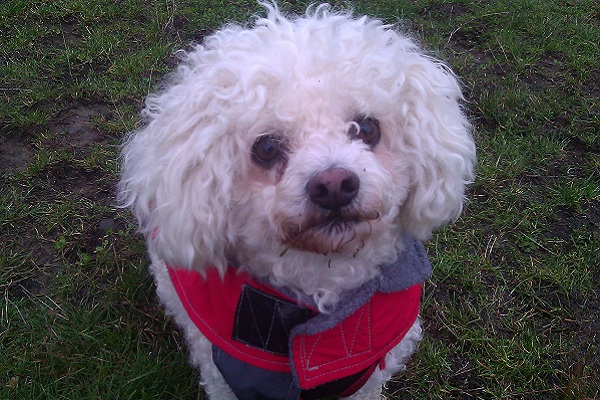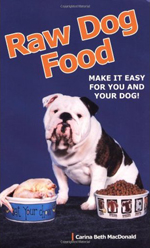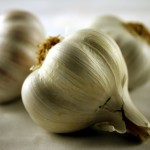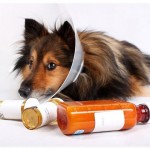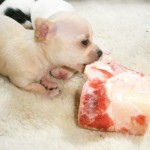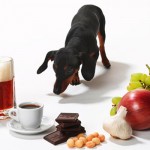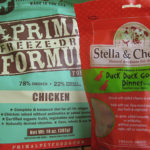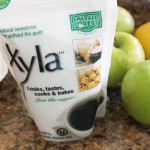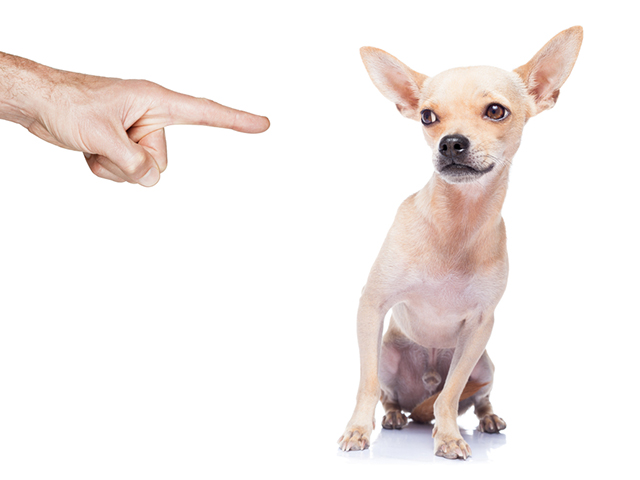It was not until 2 years ago when I started looking into switching my dogs to a natural, raw diet. Nadya suffered from severe allergies which were getting worse each year. Itching, secondary infections, tearing eyes….poor baby had to suffer through this from March until about end of September, every year. We tried everything, and as always, the vet wanted us to give her antibiotics whenever she acquired secondary infections, which made the whole situation worse. What saved her was a dog owner at a dog park, who told me about the raw food and how it had changed her dog’s life. It was a little corgi with stomach issues, suffering from GERD for years who ‘recovered’ after she put him on raw. After speaking with her for hours, I decided to look more into this and do some research.
There is plenty of information out there, and the options are home prepared raw food (food you mix together yourself. I would caution this approach, especially if you don’t have time to do research about dog nutrition, as going about it the wrong way may result in nutrient deficiencies.) or pre-prepared raw foods which you buy in pet stores. They come in a pack of 12 patties and you just thaw them and give to your dog. I usually add veggies, yams or sweet potatoes (Not necessary, but it gives them variation. The portions should be no more than 5% of the whole meal). I decided to try the latter option.
Our raw food journey started with feeding them raw for 30 days to see if the diet worked for us. I hope I encourage you to think about switching your dog to a raw diet, or at least a natural, grain-free kibble. The transition started with mixing 25% raw into their existing diet for 4 days, then continued 50% for additional 4 days…and so forth. At first, for maybe 3-4 days they both had diarrhea, but this resided shortly after. Their stools were now firm and after about 2 weeks I started noticing a tremendous improvement in Nadya. Her itching, licking of paws, tearing stopped. Misha, who from time to time had stomach issues, started showing improvement too. Overall, already after 3 weeks, improvements were seen.
What is a raw diet for dogs?
A raw diet for dogs is simply that – raw. Raw meat, raw organs and raw bones along with raw fruits and raw vegetables.
Why is a raw dog food diet healthy for my dog?
Raw, organic dog food is the healthiest food for my dog because it is fresh, whole and unprocessed.
Dogs can get by on a heavily processed diet (just like their owners get by), but it’s not the healthiest. A wide variety of fresh, unprocessed foods contribute greatly to a dog’s overall health. Here are some of the benefits, even adding as little as 25% fresh food to your dog’s diet can have significant health impact:
-Reduce pain and inflamation
-Alleviate chronic allergy issues
-Provide healthier teeth and gums and fresh breath; may eliminate the need for costly dental cleanings (dental check-ups by your vet are strongly recommended)
-Strengthen immune system for healthier pet
-Eliminate gas and smelly stools
-Reduce amount of stool (little to no waste since there are no added grains and extra carbohydrates)
Why can’t I cook the meat for my dog?
I can, but why would I? I did cook the food for the first years of their lives combined with kibbles.
Raw meat and raw vegetables are healthier for most dogs than cooked food because cooking destroys the enzymes needed for superior digestion and nutrient absorption, according to The Whole Dog Journal, a monthly publication for dog owners. These enzymes survive the freezing/defrosting process just fine.
Remember, dogs ate raw meat for thousands of years before “dog food” was invented.
Why is dry dog food kibble bad for my dog?
I do not have to be a vet or a nutritionist to realize that most commercial dog foods are bad for my dogs. Please read the ingredients of your dog’s food and let me know what you find out.
The first two ingredients in a dog’s food should be high-quality proteins. These should be specific proteins like duck or chicken. Other ingredients should be high-quality fruits and vegetables. Grain is not necessary, and all corn and by-products should be avoided.
When an animal goes to a slaughterhouse, only about half of that animal is used in human foods, according to Born Free USA, a national animal advocacy organization. These “other parts” (heads, feet, blood, unborn babies, etc.) are considered by-products and are used in pet foods.
“Meat meal,” “poultry meal” and “by-product meal” are also common ingredients in pet foods, according to Born Free. The term “meal” means the ingredients have been rendered. rendering plants take all the random, leftover body parts and boil them down to a broth. Although the high temperatures kill bacteria and parasites, the natural enzymes and proteins
found in raw ingredients are also destroyed.
An animal that died on the farm may not reach the rendering plant for several days, according to Born Free. By this time the carcass is highly contaminated. Although so called “4D” animals (dead, dying, diseased or disabled) are now banned as ingredients in human food, they are legitimate ingredients for pet food. There are also no laws or regulations against
using rendered roadkill, horses, dogs or cats in pet foods. To be sure, only buy dog foods with specific proteins in the ingredients such as duck orb lamb, not “poultry meal” or “animal by-products.”
Many pet foods also contain brewers rice as the first or second ingredient, which is an inexpensive rice by-product that contains no nutritional value, according to the Association of American Feed Control Officials. The AAFCO sets (unenforced) standards for the quality of livestock feed and pet food.
If you do decide to feed your dog rice (most dogs don’t need grain in their diets), make sure it’s whole grain brown rice.
Commercial dry dog food is also loaded with chemical preservatives, sweeteners and dyes, according to Born Free. None of these ingredients provide any nutritional value to a dog. They are used to improve the taste and appearance of the food. Potentially cancer causing chemicals such as BHA, BHT and ethoxyquin are permitted in pet foods as preservatives.
Why should I feed my dog a raw diet?
Well, if the above reasons weren’t enough …
1. A raw diet is the healthiest diet for most dogs.
A raw diet is the healthiest diet only if it is done properly. Do your research or you could end up with a very sick dog.
A raw diet is the healthiest diet for dogs because it consists of real, raw meat without any preservatives or by-products. Raw food also contains natural enzymes that haven’t been destroyed by the cooking process.
2. A raw diet prevents cancer and many other health problems.
A raw diet can help prevent obesity, allergies, diabetes, cancer, heart disease and so much more. Don’t wait until your dog has something terrible like a cancer diagnosis before you switch him to a healthier diet. Switch his diet now in order to prevent future diseases.
3. Dog food companies do not care about the health of your dog.
Dog food companies want to make money. That’s why most dry dog food is made with cheap ingredients like corn, rice by-products and animal by-products.
You can’t trust a bag of kibble to provide your dog with the nutrition he needs just like you can’t trust a TV dinner to give you the nutrients you need. It’s fine every now and then, but a lifetime of eating this way creates serious problems.
4. When you make homemade raw dog food, you know exactly what she is eating.
If you suspect your dog might be allergic to certain dog food ingredients like grain or corn or certain proteins, making your dog’s food yourself is a good way to eliminate the source of the allergies.
5. A natural raw diet makes it easy to add more variety to your dog’s food.
If I ate the same food for every meal, I would start to become deficient in certain vitamins or minerals. However, when I look at my food overall, I am eating the nutrients my body needs throughout each day or week. This is why you want to mix up your dog’s food.
Once your dog adjusts to one raw protein such as chicken, you can start switching it up and feeding him turkey, duck, salmon, beef, lamb, etc. Plus, you can add all kinds of yummy vegetables to the food such as broccoli or carrots.
6. Your dog will look healthier if she eats natural raw dog food.
Owners who feed their dogs a raw diet claim their dogs have shinier coats, healthier skin, more lean muscle and less fat. They have cleaner teeth and gums, and their breath is less smelly. I hear there’s a lot less poop, too. That’s always nice
7. Raw dog food contains enzymes that are important to the body.
These enzymes are important for digestion and nutrient absorption. When food is heated above 118 degrees Fahrenheit, the enzymes are destroyed, according to Aimee Quemuel in her book “42 Rules to Fight Dog Cancer.” For the same reason, you should include raw fruits, vegetables and nuts in your own diet.
8. You love your dog and you want him to receive the very best care.
The least you could do for him is look into a raw diet and see if it’s something reasonable for you and your dog. No one loves your dog more than you. And no one is looking out for his health better than you. Don’t forget that.
Misha, Chief Operating Officer @Healthy Dog Club enjoys his raw bone during a break from work. 🙂
9. Dogs ate raw food for thousands of years.
Eating raw meat is natural for a dog! Dogs have been eating grain-based kibble for only the last 30 years or so. How on earth did they get by without kibble?
Reasons not to feed a dog a raw diet
There are, of course, perfectly acceptable reasons not to feed your dog a raw diet. Here are a few:
1. Feeding a dog a raw organic diet costs more.
Some hard-core raw food enthusiasts will tell you that feeding your dog raw does not cost any more than a high-quality kibble. This might be true if you’re going to buy mass quantities of meat in bulk or if you work out a deal with a local rancher.
But who’s really going to do any of that? Not me. If I feed my dog a raw diet, I just assume I’m going to pay quite a bit more. My dogs eat pre-prepared raw patties. If I make the food myself, I will be buying meat from the grocery store. Either way, $$$$.
2. Feeding a dog a natural raw diet can give the dog an upset stomach.
There are mixed thoughts on this. A new diet is bound to cause a few digestive issues. Some raw dog food companies and vets say it’s better to switch the dog from kibble to raw instantly, with no transition. The reason for this is because it’s difficult to digest the combo of kibble and raw. Others say to do a gradual switch the way you would with two kibbles. Either way, if your experiences an upset stomach, it will pass
3. Raw dog foods are messy.
Cleaning up after a sick dog is messy, but so is preparing a bunch of raw meat. The dog’s bowls and eating area is also messier. You’ll also have to wash your own hands, the dog’s bowls and the area where you prepared the food because of the raw meat and the possibility of bacteria. It’s no different than the precautions you take to prepare your own meat.
4. Feeding a raw dog food diet is time consuming.
If you go with the pre-prepared route like I’m doing, it doesn’t take that much time. You just throw a patty in a dish and let it de-thaw overnight. Then serve. But you will have to wash your dog’s bowls more often. And, if you plan to prepare all the food yourself using your own ingredients, then you’ll spend time planning the meals, shopping for ingredients, storing the ingredients, preparing the food and cleaning up.
5. Storing raw food for your dog takes up more space.
We have a smaller freezer. Right now my freezer is holding two weeks of raw food for Misha and Nadya, along with some of our family’s food. If you havem a small dog, storage won’t be as much of an issue. But if you have medium to large dog (or a great dane!) or if you have multiple dogs, you should consider buying a larger freezer for more storage. Keep it in the garage.
6. Some dogs can’t handle all the raw protein.
Old dogs, dogs with kidney issues and dogs with pancreatitis (inflammation of the pancreas) are just a few examples of dogs that should not eat a raw diet, according to most vets.
Always check with your vet if you are not sure.
7. Your vet might not understand the benefits of a raw diet for dogs.
A good vet will listen to you and openly discuss the pros and cons of a raw diet for your dog. If your dog’s vet is leery of a raw diet, find a holistic vet in your area or explain to your current vet why you are interested in a raw diet.
Most traditional vets say they typically do not recommend a raw diet because it is too complicated to maintain long- term. It’s also hard to know whether or not your dog is getting a balanced diet, especially if you are making the food yourself.
8. Your dog will be begging for more ‘human’ food.
This will be a non-issue for most of us since most of our dogs already beg.
Lately I’ve been more likely to mix in healthy table scraps, vegetables or cooked meat with Misha’s and Nadya’s food or give it to them as treats.
9. It’s difficult to feed your dog a healthy raw diet while you travel.
If you travel a lot, it may not be realistic to feed your dog a raw diet. I know I plan to feed my dogs wet food when we travel. Switching back to raw is not that bad and their bodies adjust pretty fast.
Pre-prepared reputable, high quality raw brands. I used to buy Northwest Naturals, but switched to Darwins since they deliver home for free. The top 3 pre-prepared raw food brands recommended by reputable holistic, integrative vets are:
The popular ones including NV, Primal, Bravo, Stella & Chewy’s, etc are “radiated” and all the good bacteria is taken out. The quality is inferior to the three brands above, and they are much more expensive.
Please share any additional pros and cons to a raw dog food diet for dogs. We can always learn more.
Other interesting raw related information!
- How you can bring your dog’s sparkling white teeth back! Check out how here!
Want to make your own prepared raw food? This book is probably the most reputable with great information
about raw nutrition, recipes etc. A must have if you decide to go this route!

